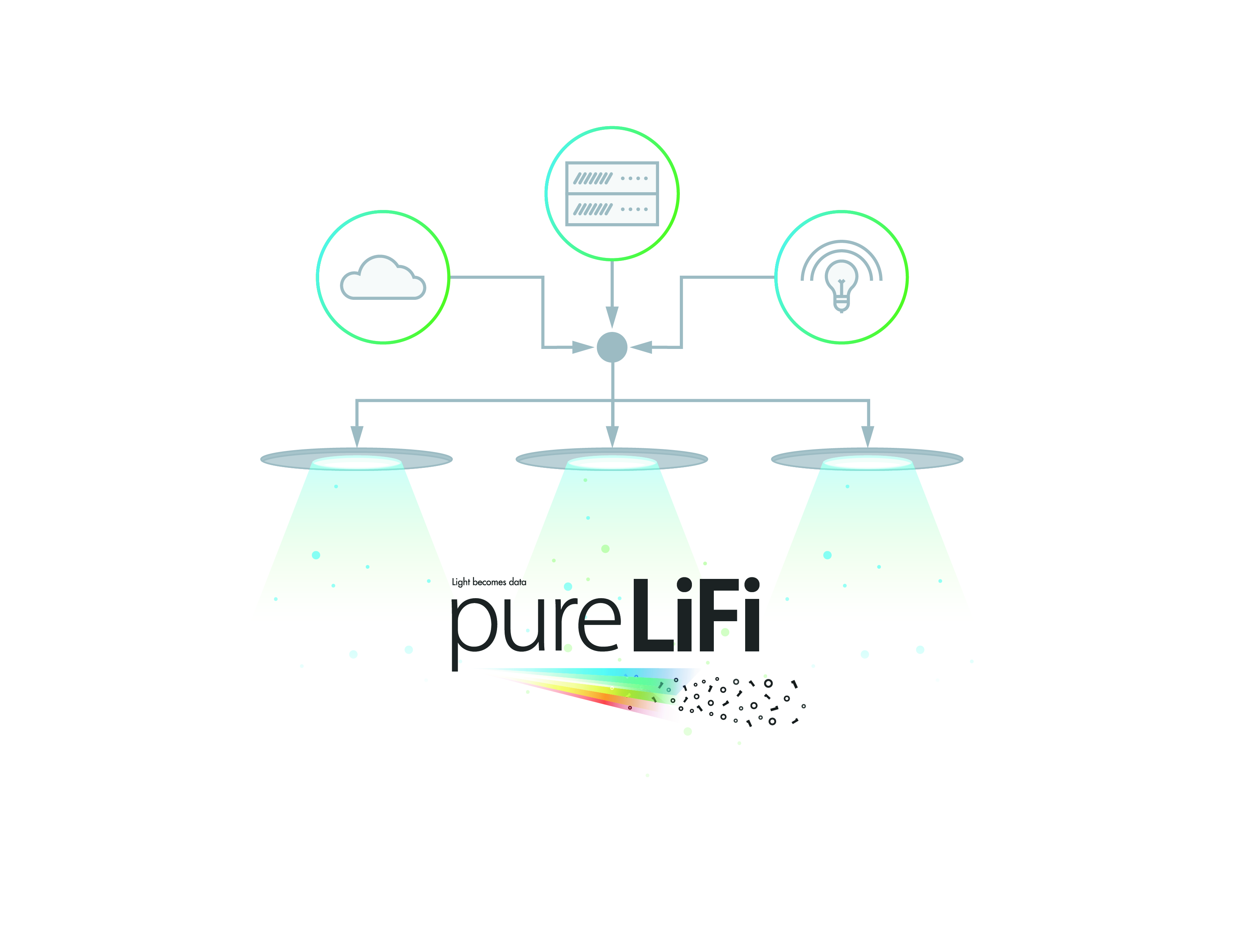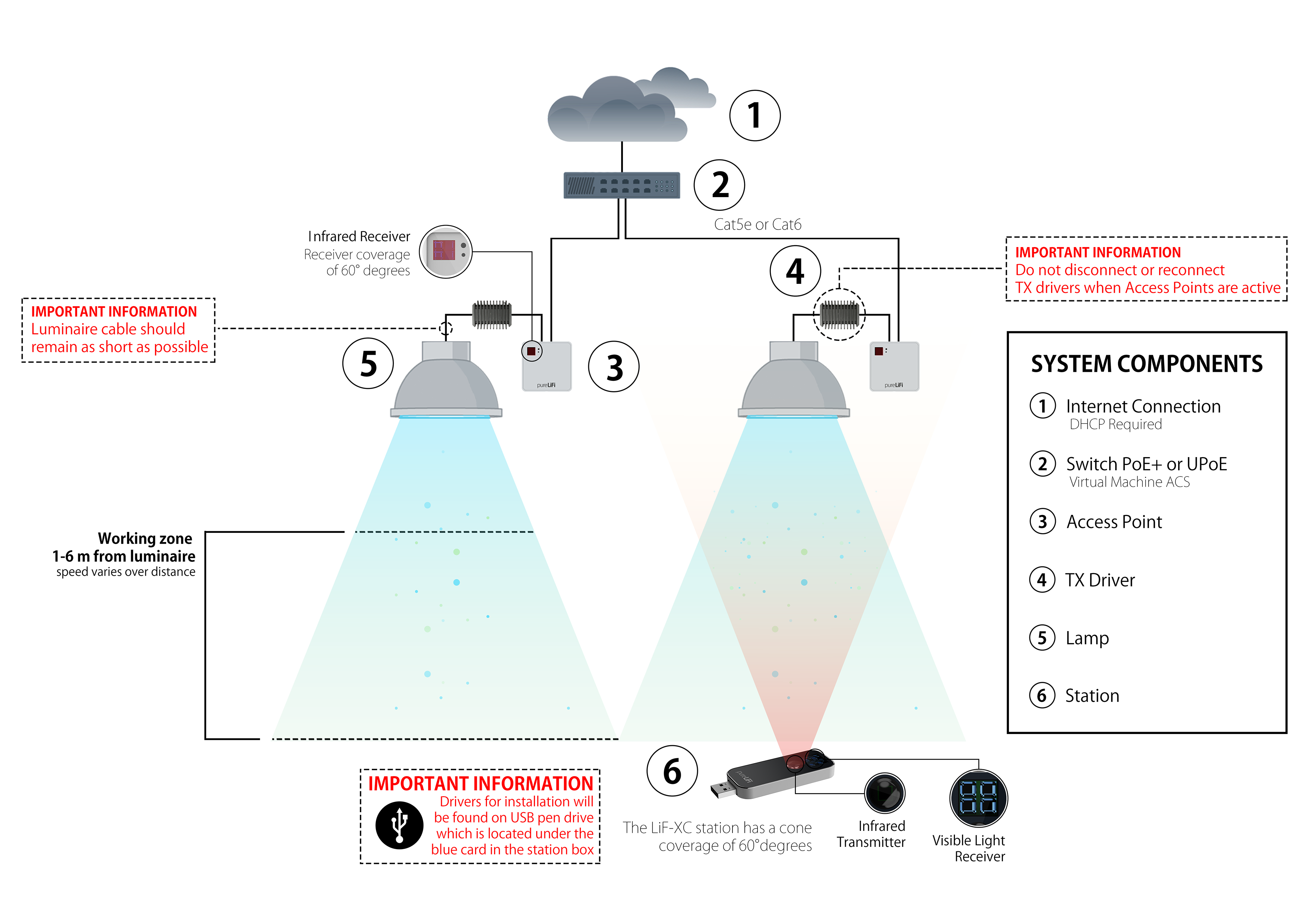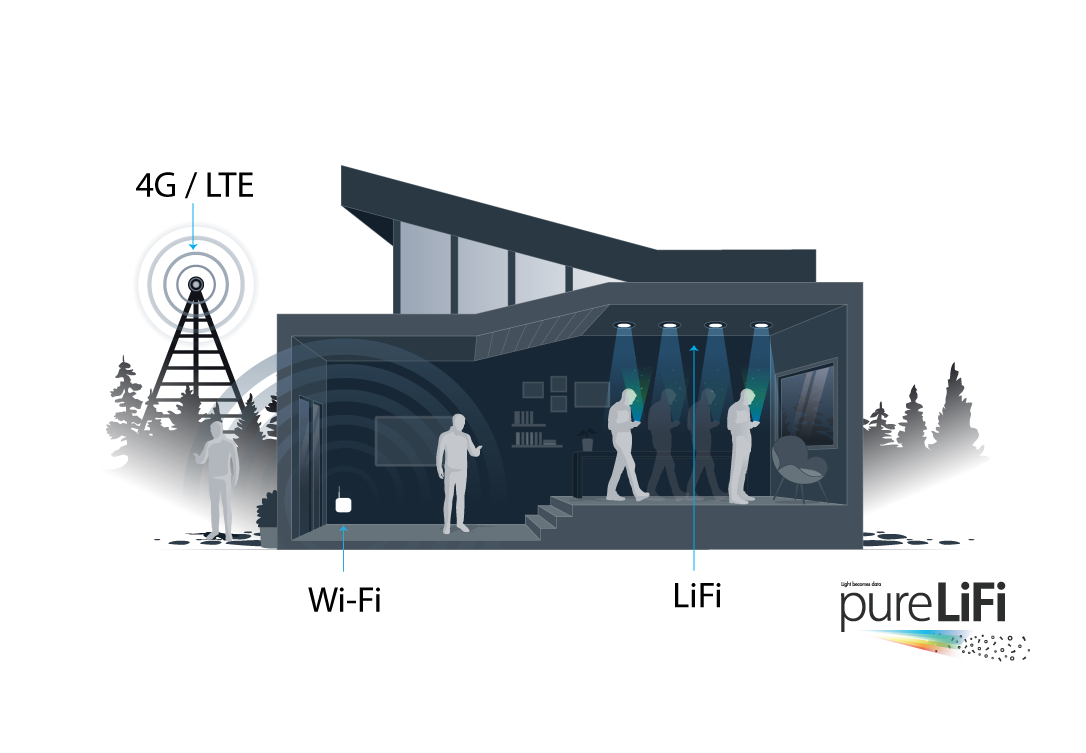How Does LiFi Work?
When a constant current of electricity is applied to an LED light bulb a constant stream of light is emitted from the bulb which is seen as visible light. If the current is varied slowly the output intensity of the light dims up and down. LEDs are semi-conductor devices, which means the current, and the visible light,
can be modulated at extremely high speeds. This high-speed modulated signal is then be detected by a photo-detector and converted back to an electrical current. The intensity modulation is imperceptible to the human eye. LiFi communication is just as seamless as RF, however has many unique bene ts, such as speed, density, security and enhanced location services.
Radio frequency communication requires radio circuits, antennas and complex receivers, whereas LiFi is much simpler and uses direct modulation methods and re ectors and di users for beam forming. Infra- red communication is limited in power due to eye safety requirements, whereas LED light bulbs have high intensities and can achieve very large data rates.



Common Myths about LiFi?
LiFi in Sunlight
There is a misconception that LiFi doesn’t work outdoors or in sunlight. LiFi can operate in daylight and even in direct sunlight conditions, as the modulated light can still be detected. LiFi relies on detecting the fast changes in light intensity and not on the absolute or slowly varying levels caused by natural disruptions in daylight or sunlight. LiFi technology modulates the light at very high rates and sunlight is constant light and therefore can be ltered out at the receiver. Our team at pureLiFi has tested our receivers outdoors under 77,000 Lux of sunlight.
What happens to LiFi when I Turn o the Light?
If all power to a light is turned o then there is no LiFi. However, LiFi technology can be enabled to dim low enough that a room will appear dark and still transmit data. There are also other options for using invisible parts of the light spectrum such as infra-red, which is currently already being used for sending information back to the lightbulb (uplink).
Is LiFi a line of sight technology?
Light bounces o of surfaces and therefore LiFi is not strictly a line-of-sight technology, however it is strongest in line-of-sight conditions.
LiFi is a cellular communication system and the data rate is not dependent on the line of sight but on the signal quality at the device. Signal quality can be de ned by the ratio of the desired data vs any interfering data and noise.
